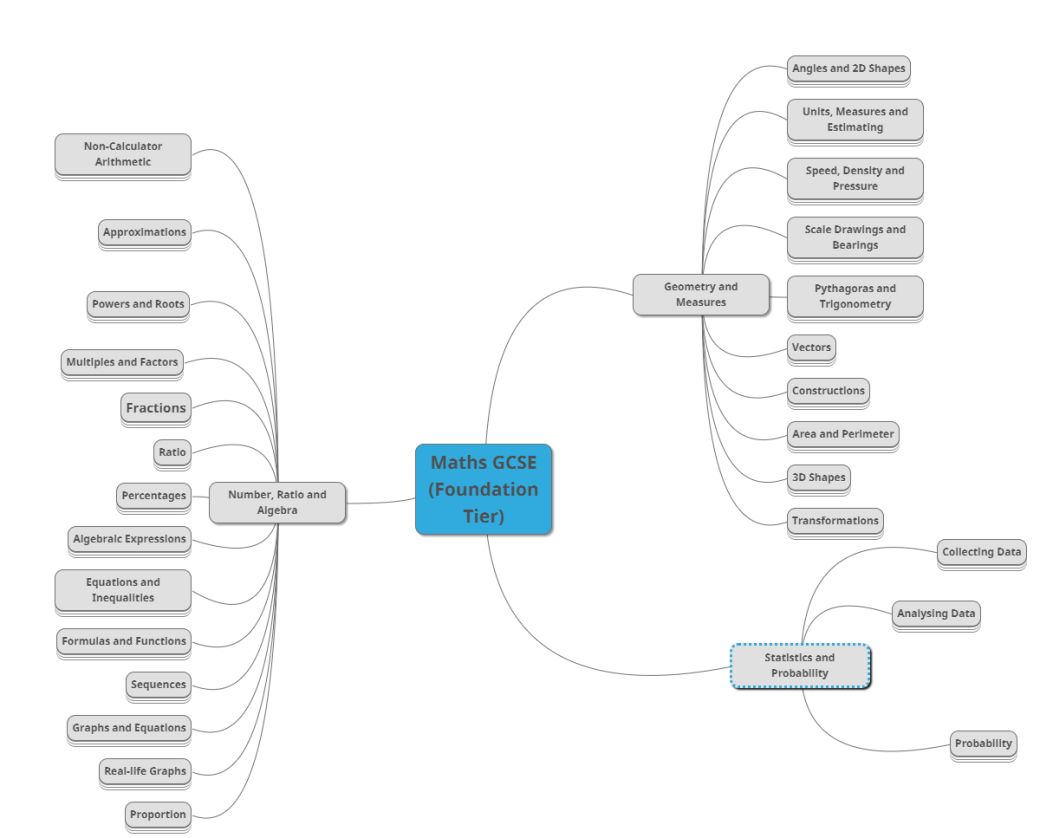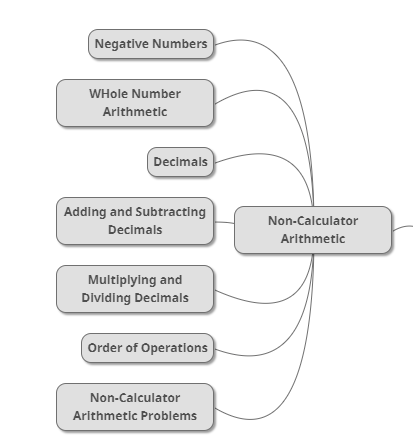In the article we will discuss the differences, pros and cons between Higher level and Foundation Level maths GCSE.
There are lots of things that can be confusing about GCSE Maths, and these are often most apparent when trying to acquire a textbook for your child. You will immediately run into the problem that most textbooks are written for a specific exam board. There are 5 exam boards in the UK, each of which write different exams based on the curriculum (essentially a single list of topics laid out by the government). Each maths department decides which exam board they will use, and in my experience this is not often clearly communicated to students. They sensibly think they are simply doing “GCSE Maths”.
Some exam boards are considered to be easier and the main difference is the style of questions, although there will be some variation in the content of each course. It is important to use the right textbook, and if you don’t know (which you probably won’t) just ask the maths teacher. Frankly, you won’t have much control over what exam board your child takes for maths and it doesn’t matter that much.
The next thing you’ll run into is that within each exam board, you will find a choice between a Higher and Foundation textbook. This does matter.
To elaborate on what I wrote above, each exam board actually produces TWO sets of maths exams in each exam season: one is Higher Tier and one is Foundation Tier. Students will sit one of the tiers, never both. Foundation Tier exams are graded 1-5, Higher Tier graded 4-9. Clearly, a student can only attain grades 6-9 by sitting the Higher Tier papers, but if they fall below a 4 they attain no grade at all!
In almost all cases, students are assigned a tier at some point in Year 9 or 10 based on what set they are in and recent assessment results. It is my experience that this process is one of the faultiest parts of the maths education system* and why I draw your attention to it here. Make sure your child is doing the tier that is right for them. Don’t let the the school decide for you through their automatic processes, and don’t let them tell you you don’t have a say. The decision of which tier your child should take is between you and your child, not the school.
Below I will try to outline the pros and cons of each tier, why it really matters and how to decide which is right for your child
Higher Ground
The obvious upside of taking the Higher paper is that it gives a student access to the top grades. Naturally, this comes with a cost. In this case the cost is having to learn more material and a dramatically harder exam. It really cannot be overstated how difficult the Higher paper is for many 16-year-old learners, and it is especially punishing to borderline (Grade 5/6) students who have just scraped onto the higher paper.
Let me present a situation I have seen many times. Around the beginning of Year 10 a student has performed well on their Foundation tier mock assessments, comfortably achieving a Grade 5. Their lessons are at a good pace, they are able to follow closely and attain mastery of many of the topics they cover. Then, a teacher or an algorithm or the academy trust fills in a box on a spreadsheet with “Predicted Grade: 6” and bumps them up to Higher Tier papers and moves them up a set. They find themselves starting from a different point to where they left off, because of course the higher sets cover material more quickly. This speed with which the lessons move is too fast for the student, and the material harder than they are used to. Soon they are lost in a depressing maze of incomprehensible whiteboards, confusing textbook diagrams and incomplete homework. Their teacher is critical of them and their parents notice the negative school reports. Their skills and, worse, interest in maths is destroyed. 18 months later they wander helplessly into the exam. “Predicted Grade: 6” is still sitting in that spreadsheet cell, but realistically they will be lucky to scrape a Grade 4, the passing mark.
Disregarding the short-term problems of a sudden change in class, the decision to change exam tier has proven disastrous for the student. Forgive the overly poetic style of the previous paragraph, but sincerely this is a case I’ve seen time and again and it really illustrates the dangers of moving a mid-range student up to the higher tier. The material is so hard that they lose interest, they lose their ability and their grade actually goes down. They end up learning less maths.
This is not to say the the Higher Tier is always a bad idea. For some students it presents a meaningful and enjoyable challenge, but those students must be in a position to tackle it. This means by Year 10 they must be comfortably achieving at least Grade 6 in mock assessments.
Strong Foundations
Clearly I’m a big fan of the Foundation Tier essentially for the same reasons I’m wary of Higher. The Foundation exams present a useful and achievable target for most students. The amount of content is lower, which gives students time to get a good handle on much of it. They can see and feel that they are making progress, which encourages them to keep trying. There is far lower risk of them getting lost in the fog. In my opinion it is better to learn some solid maths skills that you will remember AND get yourself a Grade 5, rather than gamble everything on a possible Grade 6 with a high chance of losing it all.
It would be disingenuous of me not to mention the possible downsides of taking the Foundation paper. Materially, the highest grade you can get is a 5 (considered a “strong pass”) and you are not able to access a 6 or above.
Less tangibly, choosing Foundation Tier means being kept in or moved to a lower set. Theoretically that should just mean a slower pace and more time to master the material, but in this series I have tried to be as practical and realistic as possible. The reality here is, at state school, a lower set at best means worse behaviour among the class. It may also mean a lower standard of behaviour management and teaching. I’ve also tried to explain how to make your child’s maths success as independent of the school as possible, but we have to be honest with ourselves that school maths will still have an impact. It is worth assessing the size of this risk and its affect at your child’s school.
Frankly, the quality of the teaching at the school could be a consideration in general. Do the teachers have the skill to teach the demanding skills required to tackle the Higher Paper questions? Can they keep the lower sets in check? In an ideal world these things would not be factored but, like I said, we need to be realistic.
Ego No Go
Don’t let pride be a factor in this decision. It’s another thing that I have seen too many times. There are many students who have built a lot of their identity and sense of self-worth around their academic performance – especially in the core subjects. This is understandable since both the education system and society at large gives so much positive feedback to academic achievement, at least superficially.
This leads the student to disregard the Foundation Tier out of hand – “Why would I limit my Grade to a 5 at best?” This can be calamitous if they fall into the Higher Tier traps I outlined above. Those students who dismiss the Foundation Tier due to ego will be the same who beat themselves up when they sit the Higher Tier paper and, having been confused about maths for 2 years, only get a Grade 3.
Don’t let pride be a factor in this decision. Make it practically
To summarise, only do the higher paper if a student can do so comfortably: already getting minimum of Grade 6 without too much effort. Broadly speaking, if in doubt it is better to take the Foundation Tier and get it mastered.
As always if you have any further questions don’t hesitate to contact me directly by email jake@jakeharristuition.com
———
*I wanted to add a footnote about why placing students into Higher and Foundation Tiers seems to be done so badly. Interestingly Ofqual is aware of the problem, having written to headteachers in January of 2020 essentially reminding them not to screw this up. Astoundingly in 2018, almost 10% of Higher Tier students performed so badly they achieved no grade at all. Of course there could be multiple factors for this but misplacement of students by teachers is likely to be principle among them. But why does this happen?
My working theory is that there are 2 causes. The first, not described in the main article above because I think it is misleading and distracting, is that the grade boundary for a pass on Higher Tier maths is staggeringly low. Roughly, a student on the Higher Tier can get 4 out of every 5 questions wrong, achieve a grade 4 and pass. Surely anyone can get 1 out of 5 questions correct, right? I think this is the logic that motivates teachers to bump so many students up to the Higher Tier. The grade boundary to pass is so low, it tempts teachers in to putting students there as an easy track to a pass, disregarding the fact that it will damage actual learning and risk a Grade U.
Secondly, it seems teachers (primarily at state schools) don’t have enough perspective of the population as a whole to make an accurate judgement about where their student cohort falls within it. The motivation behind it is as follows: The proportion of students who take each tier is roughly 50/50 (leaning slightly toward foundation in recent years, possibly as awareness of this problem increases). So if I need to place my students into the two tiers, the top half should do Higher and the bottom should do Foundation. Makes sense.
EXCEPT that this assumes that the students at your school are a proportionate sample of the student population as a whole, which they almost certainly are not. For instance, there will be some very high-achieving schools where almost all candidates score Grade 6 or above, so it would be unfair and cruel to place half of them into the Foundation paper just because that’s what happens on average. The reverse is true for schools with very low attainments. Yet consistently I see schools where Set 1-3 Maths do the higher paper, Set 4-6 do Foundation: the naïve 50/50 split.

